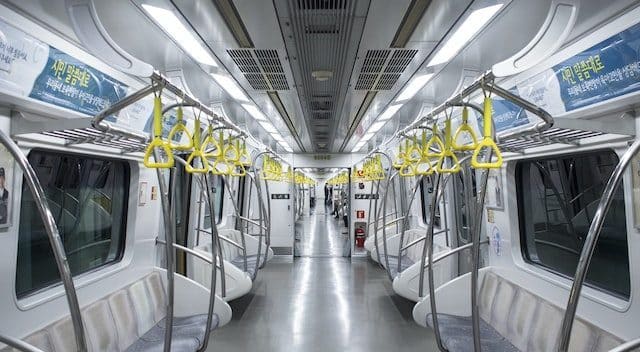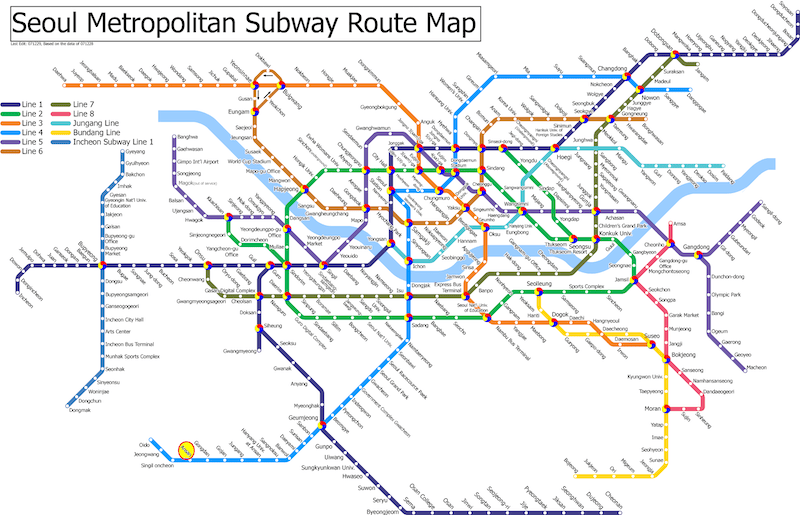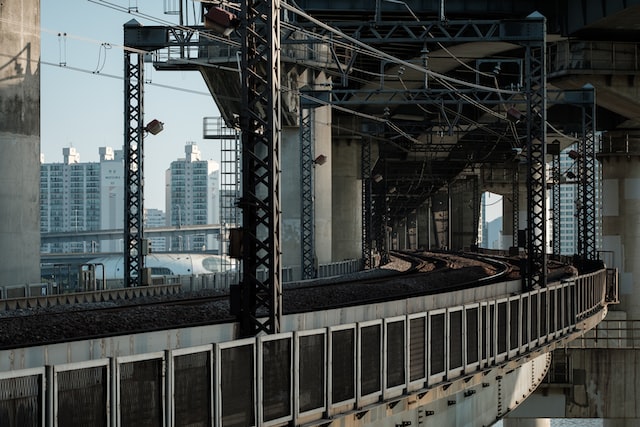Physical Address
304 North Cardinal St.
Dorchester Center, MA 02124
Physical Address
304 North Cardinal St.
Dorchester Center, MA 02124

With one of the most efficient subway systems in the world, Seoul is easily navigable despite its wide city borders. Here is a cheat sheet for navigating and riding the Seoul subway like a local.
A short glance at a map of the Seoul subway system is sufficient to overwhelm a first-time rider. With 23 lines, the subway map resembles a plate of colourful spaghetti more than it does a transportation plan.

However, it’s not as difficult as it seems; the subway is the most convenient, affordable, and culturally immersive way to go throughout the city.
With approximately 300 stations, the nearest subway station to your lodging is probably just around the corner.
To locate the closest station, visit Google Maps, a Seoul metro app (Transit, Citymapper, or Subway Korea are all excellent alternatives), or ask a local. The majority of Seoul residents utilise the subway and are familiar with its layout.
Generally, subway entrances are covered staircases on the sidewalks of busy areas with distinctive yellow signage. Stations are named after the neighbourhood in which they are located (Sinsa or Itaewon, for example) or a famous site in the vicinity (i.e. City Hall, Gyeongbokgung, etc).
Navigating the Seoul subway is made easier for everyone through various accessibility features designed to cater to passengers with varying needs. Elevators and ramps are widely available at most stations, facilitating access for wheelchair users and those with mobility challenges. Tactile paving aids the visually impaired in easily identifying platform edges and staircases. Additionally, designated waiting areas for elderly and disabled passengers ensure those in need of seating can travel more comfortably. Special assistance services are available, with staff ready to help when necessary.
You can pay for your subway fare in cash or with a T-Money Card. When paying with cash, you must acquire single-ride tickets for each trip. Use the cash option if you plan on taking the subway fewer than five times. Otherwise, it is advised that you acquire a T-Money Card. Although this card must also be loaded and reloaded with cash, it can be topped up to last the duration of your vacation.
In addition to being more convenient, the T-Money Card allows you to save Korean won on each ride and move between the subway and bus without being charged for two separate trips. Tap the card upon entering and exiting each form of transit. During your stay, the T-Money Card can also be used to pay for taxi fares.
T-Money Cards can be purchased and reloaded at the airport, convenience stores, and subway station vending machines (4,000 won or £2.70 per card).
To add funds to your T-Money Card via a vending machine:
• Choose your language
• Insert your card into the “reload” dock.
• Select the amount you wish to deposit. (Fares are based on distance. A subway ride for an adult costs 1,250 won (£0.84) for the first 10 kilometres (6 miles); 100 won (£0.07) is charged for every extra 5 kilometres (3 miles). If you are mostly exploring central Seoul, you will likely not pay more than the base cost for each trip.)
• Insert cash into the machine. (Cash only is accepted.)
• Remove card upon completion of the transaction.
If you wish to reload your card in a convenience store, provide the clerk with your T-Money Card and the desired quantity of funds. (Use “T-money card-uh man-won chung-jon-hae ju-sae-yo” to request an addition of 10,000 won (£6.70) to your card.)
If you have a balance of 20,000 won or more at the conclusion of your journey, you can receive a refund at one of the station vending machines. Otherwise, the card has a five-year validity period for any remaining value.
Related Post: AREX Train Schedule
The Seoul subway is renowned not only for its efficiency but also for its comprehensive safety measures. Stations and trains are fitted with extensive CCTV coverage to ensure passenger security. Emergency contact points and intercoms are strategically placed throughout, allowing passengers to request assistance or report urgent issues. Security personnel are present across the network to help maintain order and assist riders. Public announcements are regularly made in multiple languages, guiding passengers on safety protocols and updates specific to their journey, enhancing overall travel comfort.
With your T-Money Card in hand, it’s time to conquer the Seoul metro system!
Tap your card at the turnstile as you enter. The number at the top of the reader represents the base fare, while the number at the bottom represents the remaining balance. If your card lacks sufficient money, you will not be permitted to enter or exit.
To avoid passenger congestion, be prepared to tap your T-Money Card. If your card has an error, you must step to the side and allow others to pass. If you require assistance, click the assistance button located at the end of the turnstiles.

Follow these methods to reach your desired station without hiccups:
• On a subway map, indicate your current station (and line) and your destination station (and line).
• Follow the line from your departure station to your destination station (each line has an assigned number or name and colour). Notate each line change, since you will be required to transfer at these stops.
• After identifying the first line you will ride, make note of its last stop. This station indicates the required direction of travel.
• In the subway station, follow the signs to the first line of your route. Check the direction or final stop after you reach the platform (as noted above).
• While waiting for your train, stand behind the yellow line and board when it arrives.
• Train monitors will announce each stop in different languages, as well as the availability of transfers at each station and which side the doors will open on. Follow the signage to your next line as you depart the train if you need to transfer. Unless your connecting train is in another station, you will not be required to tap out of the station.
The previously listed applications make navigation a snap and are accessible on the subway thanks to the presence of free public Wi-Fi.
To navigate the extensive Seoul subway system with greater convenience, passengers can rely on various mobile apps offering real-time tracking. Apps like Subway Korea and KakaoMetro provide updates on train schedules, arrival times, and platform information, allowing you to plan your journey accurately. With real-time updates, commuters can adjust their routes as necessary, whether navigating transfers or ensuring timely travel during peak hours. The apps are user-friendly and are available in multiple languages, making them an essential tool for tourists and locals alike.
During busy travel periods, it can be difficult to manoeuvre around other passengers. To avoid missing your stop, make your approach to the train doors at least one station in advance. As you exit the station, be careful to tap out in the same manner as your entry.
Each subway station has a number of exits that are numbered. Maps and signage throughout the station make locating the correct exit simple. Larger stations, such as Gangnam Station or Gwanghwamun Station, may have more than a dozen exits, so if you’re meeting someone, it’s best to choose an exit number beforehand. Similarly, you can view a destination’s transportation information on its website prior to your arrival.
Navigating through some of Seoul’s busiest transfer stations can be streamlined with a bit of preparation. Stations like Gangnam, Seoul, and Sadang witness heavy foot traffic, primarily during rush hours, as they connect multiple lines and offer convenient transfers. Knowing your exit strategy can significantly reduce stress; study maps beforehand, and pinpoint exit numbers for your destination in advance. Familiarise yourself with platform layouts and directional signs to optimise your time spent transferring, enabling faster and smoother subway transitions.
To avoid embarrassing cultural gaffes, it is best to adhere to the following guidelines:
• Seating at the ends of each car is allocated for the elderly, pregnant women, and individuals with impairments. The seats in the middle of the car are available to everyone, however it is courteous to give up your seat if someone else needs it (i.e. a senior citizen or an individual carrying a heavy load).
• Wait for passengers to vacate the train vehicle before entering.
• On escalators, stand on the right and walk on the left. This enables hurried travellers to easily catch their train.
• Avoid speaking or playing loud music on the train. Reduce the volume of your headphones and disable your phone’s notifications.
• Should you have a backpack in tow, set it on the luggage rack or wear it on your chest for the duration of your ride.
• Although eating on the metro is not illegal, it is considered inappropriate.
• Commuters and soju survivors have the uncanny capacity to sleep soundly on the subway, even in the most agonizing-looking positions, and wake up just as the train arrives at their station. If you, too, are in need of a nap, feel free to do so. But avoid getting in anyone else’s space.
• Koreans dislike manspreading (“jjeok-beol-nam”).
Embracing the local culture not only involves understanding basic etiquette but also respecting specific norms observed on the subway. Passengers are encouraged to maintain silence both on platforms and trains, highlighting respect for others’ personal space. Even in crowded conditions, keeping a respectful distance is appreciated, ensuring a pleasant journey for everyone. It’s also common practice to offer your seat to anyone visibly in need, reinforcing the community spirit found throughout South Korea.
The subway bathrooms are typically positioned near exits and are free of charge, which is really handy for expectant mothers or for those who have had too many beverages at lunch time.
The T-Money Card is usable in all Korean cities with metro systems (including Busan and Daegu), but cannot be reloaded in these cities. If you need to store your items, the majority of stations offer lockers of varying sizes for a nominal price. You may also pay with a T-Money Card.
The subway system in Seoul is open from 5.30 a.m. to 1 a.m., but certain train lines close sooner. Take note of the operation hours of each station. Rush hour often occurs between 6.30 and 9 a.m. and 4.30 and 7 p.m. Commuters transfer between subway lines at the busiest stations, such as Gangnam Station and Seoul Station, which are located in business districts. If possible, avoid these crowded stations during these hours. If you must travel during rush hour, you should anticipate crowded trains with light pushing and shoving.
If you need to store your items, the majority of stations offer lockers of varying sizes for a nominal price. You may also pay with a T-Money Card.
Bicycling in Seoul? On weekends and holidays, bicycles are permitted on the subway, but only on the first and last train carriages.
The metro system in Seoul is renowned for its outstanding amenities. Numerous major stations are attractions in their own right and contain a variety of amenities, such as restaurants, convenience stores, cosmetic shops, clothing boutiques, breastfeeding rooms, bicycle racks, elevators, and wheelchair lifts.
For a first-timer, the Seoul subway system is a huge and confusing place. But as with any large metro system (think of the one in your hometown), once you’ve done it a few times it becomes easier until its simply a way of getting around.
As we’ve covered before, Seoul is a nice place and the people are super helpful to tourists, which makes asking questions much easier. Check out our article on the AREX for connections between Seoul Airport and Incheon.